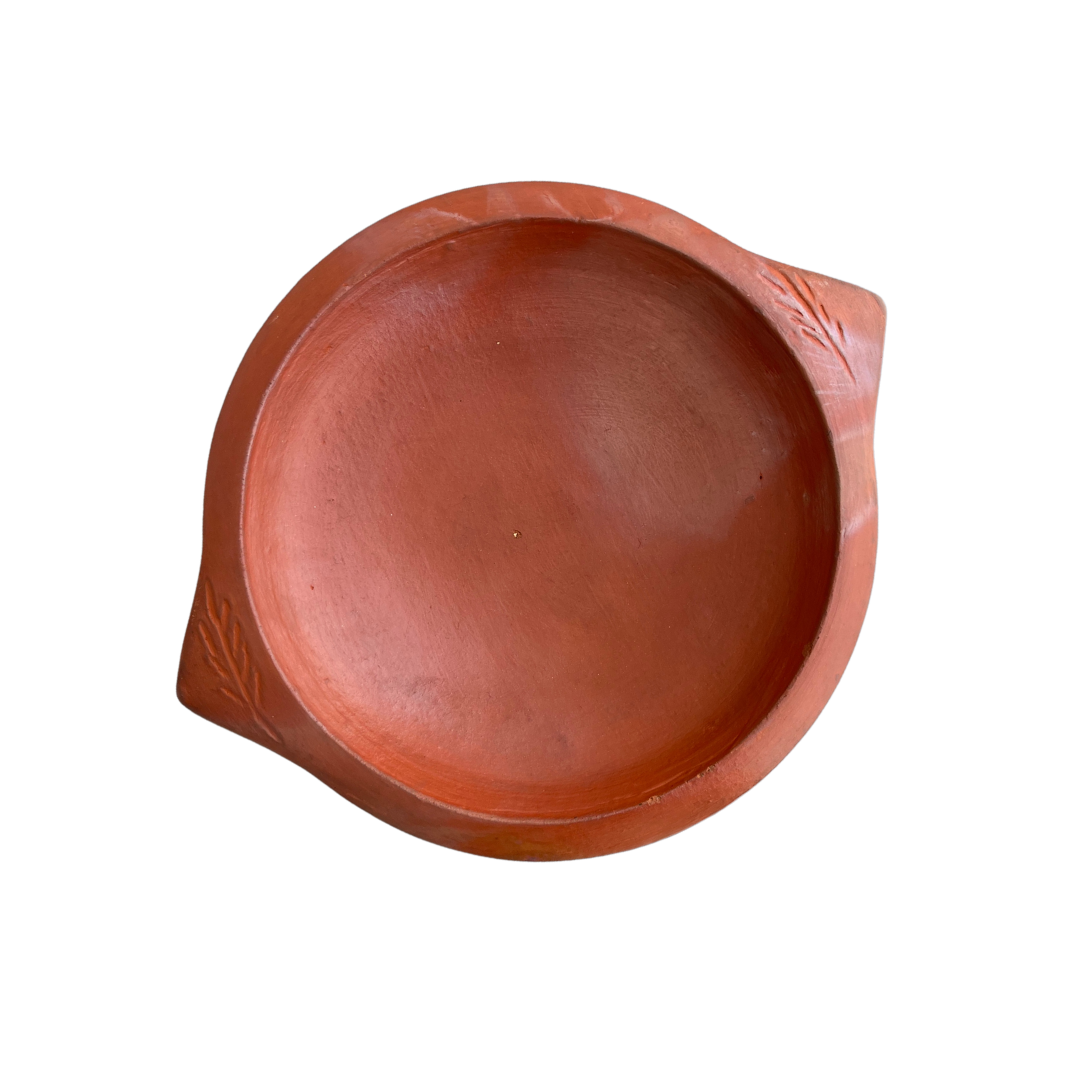Pre Seasoned Clay Tawa
₹899.00
Price incl. GST (18%) ₹137.14
1
Product Details
Weight: 0.50 kg
The Kerala clay tawa, also known as "chatti tawa" or "manchatti tawa," is a traditional cooking utensil used in Kerala, a state in South India. It is crafted from natural clay sourced locally, typically from river beds or other clay-rich regions.
Here's a description of the Kerala clay tawa:
1. **Material**: Made from natural clay, the tawa is crafted using traditional methods passed down through generations.
2. **Shape and Design**: The tawa typically has a flat, circular shape with a slightly raised edge, similar to a regular tawa or griddle. It may vary in size, but most are medium to large, suitable for cooking various dishes.
3. **Texture and Finish**: The surface of the clay tawa is usually smooth but may have a slightly coarse texture due to the nature of the clay. It often features a reddish-brown color, characteristic of fired clay.
4. **Usage**: The Kerala clay tawa is primarily used for cooking traditional Kerala dishes like dosa, chapati, and other flatbreads. It's also suitable for making pancakes, omelets, and frying various foods.
5. **Benefits**: Cooking on clay is believed to impart a unique flavor to the food and promote even heat distribution, resulting in perfectly cooked dishes. Additionally, clay is considered a healthier option compared to metal cookware as it doesn't leach harmful chemicals into the food.
6. **Maintenance**: To maintain the integrity of the clay tawa, it's essential to season it properly before the first use and regularly thereafter. It should be cleaned with water and a soft sponge or cloth; harsh detergents should be avoided.
7. **Cultural Significance**: The use of clay utensils like the Kerala clay tawa is deeply rooted in Kerala's culinary traditions. Cooking in clay vessels is considered an essential part of maintaining the authenticity and flavor of traditional Kerala cuisine.
Overall, the Kerala clay tawa is not just a cooking utensil but also a symbol of Kerala's rich cultural heritage and culinary legacy.
Save this product for later
Pre Seasoned Clay Tawa

